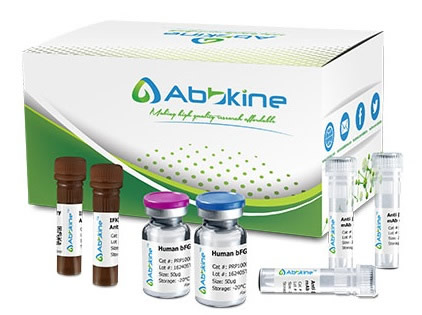Alkaline phosphatase (ALP) (EC 3.1.3.1) is a hydrolase enzyme responsible for removing phosphate groups from many types of molecules, including nucleotides, proteins, and alkaloids. The process of removing the phosphate group is called dephosphorylation. As the name suggests, alkaline phosphatases are most effective in an alkaline environment.Alkaline phosphatase has become a useful tool in molecular biology laboratories, since DNA normally possesses phosphate groups on the 5 end. Removing these phosphates prevents the DNA from ligating (the 5 end attaching to the 3 end), thereby keeping DNA molecules linear until the next step of the process for which they are being prepared; also, removal of the phosphate groups allows radiolabeling (replacement by radioactive phosphate groups) in order to measure the presence of the labeled DNA through further steps in the process or experiment.
Fish Alkaline phosphatase (ALP) ELISA Kit employs a two-site sandwich ELISA to quantitate ALPL in samples. An antibody specific for ALPL has been pre-coated onto a microplate. Standards and samples are pipetted into the wells and anyALPL present is bound by the immobilized antibody. After removing any unbound substances, a biotin-conjugated antibody specific for ALPL is added to the wells. After washing, Streptavidin conjugated Horseradish Peroxidase (HRP) is added to the wells. Following a wash to remove any unbound avidin-enzyme reagent, a substrate solution is added to the wells and color develops in proportion to the amount of ALPL bound in the initial step. The color development is stopped and the intensity of the color is measured.
Fish Alkaline phosphatase (ALP) ELISA Kit listed herein is for research use only and is not intended for use in human or clinical diagnosis. Suggested applications of our products are not recommendations to use our products in violation of any patent or as a license. We cannot be responsible for patent infringements or other violations that may occur with the use of this product.
bio-equip.cn




